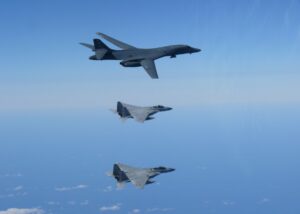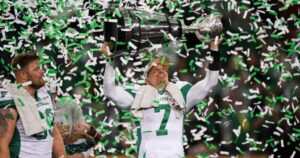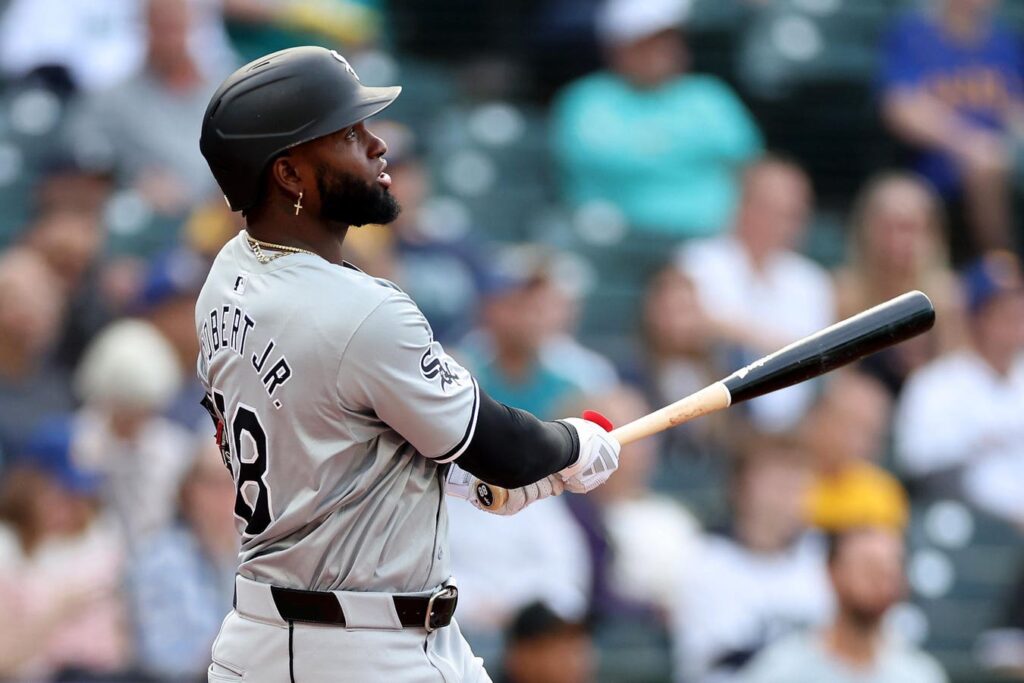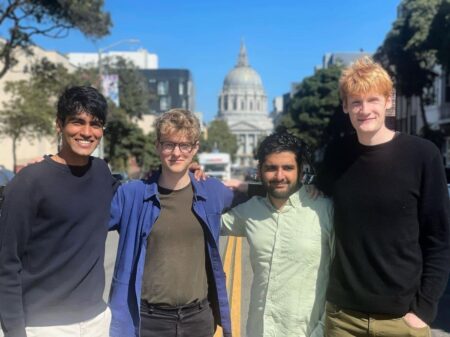Within the next few weeks, the baseball trade winds may be blowing as strongly as Hurricane Beryl.
Before the July 30 deadline, more than a dozen prominent players – perhaps even a few who suit up for the All-Star Game – are likely to move.
Everything depends on team decisions whether to buy or sell.
With playoff spots available to a dozen teams (six per league), clubs must decide whether they should pare payroll now and stock up for the future or go all-in and add a player or two who might make a difference down the stretch.
Contracts are a big consideration too. Players with no-trade or limited-trade clauses must grant their permission. And teams may hesitate to acquire any of the 258 potential free agents who can pick their own destinations once the 2024 World Series ends.
Some of them are big names, including current American League MVP favorite Juan Soto of the Yankees, former National League MVPs Cody Bellinger of the Cubs and Paul Goldschmidt of the Cardinals, and two-time Cy Young Award winner Blake Snell of the Giants.
Under the current playoff structure, the two teams in each league with the best records will receive a “bye,” allowing them to avoid the best-of-three Wild Card Series. But they still must win a best-of-five Division Series and a best-of-seven Championship Series to reach the final round, the best-of-seven World Series.
That means a team with a “bye” must win 11 postseason games to win a world championship. A team without a “bye” would have to win 13 to go all the way.
Big money is involved, since the longer a team lasts, the more money it wins to divide among its players and executives.
A full World Series share for the Texas Rangers, who won their first world championship in 2023, totaled $506,263 and was part of the largest pool in baseball history. The $107.8 million split among the dozen playoff teams narrowly topped the $107.5 million of 2002, the first season with expanded playoffs.
Even for players with eight-figure salaries, that’s a lot of money.
But repeating is so difficult that no club has done it since 2000, when the Yankees won their third World Series in a row. More playoff rounds have been added since.
Many of the top contenders, including the Baltimore Orioles and Los Angeles Dodgers, are expected to offer competing packages of blue-chip prospects for established veterans who could prove the missing links to their postseason puzzles.
Some half-dozen teams wise enough to realize they have no shot at the playoffs could the keys to the trade deadline.
The Chicago White Sox, for example, are widely expected to field offers for left-handed starting pitcher Garret Crochet, a 25-year-old under team control through 2026, and center-fielder Luis Robert, Jr., two years older but coming off a 38-homer, 20-steal performance last summer. Tommy Pham, an outfielder less expensive than either, could also find a new home.
Another cellar dweller, the Miami Marlins, may move southpaw closer Tanner Scott, the best reliever on the market but a free agent this fall – making him an expensive rental. Look for the Fish to dangle Jazz Chisholm Jr. too. He’s a 26-year-old speed-plus-power guy capable of playing a middle infield position or patroling center field.
The other Florida team, the Tampa Bay Rays, could part with former post-season hero Randy Arozarena, an outfielder earning $8.1 million, and 30-year-old starting pitcher Zack Eflin, both playing under contracts that carry beyond 2024.
Also in the American League East, the Boston Red Sox would love to trade closer Kenley Jansen, an impending free agent, for a starting pitcher. But that goal may be more easily said than done.
On the other hand, look for the Los Angeles Angels to trade Taylor Ward, an outfielder, and perhaps even closer Carlos Estevez, an All-Star last season. But Mike Trout’s $430 million salary can’t be moved even if the three-time MVP would agree to a deal.
The Colorado Rockies, not known for heavy dealing in past years, could part with pitchers Cal Quantrill and Austin Gomber but probably not long-time local hero Charlie Blackmon, a heavy-hitting outfielder.
Washington couldn’t wait for the trade deadline to arrive; it released Eddie Rosario, Nick Senzel, and Victor Robles weeks ahead of time but may still move outfielder Lane Thomas and closer Kyle Finnegan, both of whom have high trade value, plus outfielder Jesse Winker and reliever Dylan Floro, a pair of free agents to be.
Getting a head start on their competition in the National League Central, the Milwaukee Brewers engineered separate swaps with the Rays and Mariners, respectively, for Aaron Civale and Dallas Keuchel, an aging lefty who once won a Cy Young trophy.
Former Brewers ace Corbin Burnes, now with the Baltimore Orioles, promises to test the free-agent market this fall but is not likely to move before the deadline. In fact, the Birds hope to beef up their rotation, perhaps by trading for the much-coveted Crochet. They’re one of the few teams with an overload of talented prospects to trade.
So are the Dodgers, determined to fortify a starting five stung by injuries to Clayton Kershaw, Walker Buehler, star rookie Yoshinobu Yamamoto, and others.
Also hoping to fill unexpected voids are the Atlanta Braves, who lost their best position player (defending MVP Ronald Acuna, Jr.) and their best pitcher (NL strikeout king Spencer Strider) to season-ending injuries.
Alex Anthopoulos, the team’s youthful president of baseball operations, traded so well after a 2021 Acuna injury that the Braves won the World Series without him.
The Braves won’t unload veteran lefty Max Fried, at age 30 the ace of the Atlanta staff but a Southern California native who could return to his roots this fall after declaring free agency.
Don’t forget the San Diego Padres in any discussions involving trades. Like Jerry DiPoto in Seattle, A.J. Preller has been one of the game’s most active deal-makers in recent seasons. The need in San Diego has become acute with key starting pitchers Joe Musgrove and Yu Darvish both out of action for long stretches this season.
Anticipating the need for more pitching, Preller acquired Dylan Cease from the Chisox long before the injury wave hit his staff.
Like the Padres, the Toronto Blue Jays had expected to contend for a division crown this year. In a powerful division dominated by the Orioles and Yankees, however, the Jays stumbled so badly that they may become deadline dealers.
Shortstop Bo Bichette and even All-Star first baseman Vladimir Guerrero, Jr. would attract huge hauls from buyers.
The Yankees could be one of those buyers, especially since their infield has not generated much offense this season. But Soto is not leaving the Bronx just yet, with the team anxious to keep the former batting champion out of free agency even with stiff competition likely from the crosstown Mets.
The team will also hang onto Gerrit Cole, unanimous AL Cy Young winner last season, even though he could opt out of his contract and test free agency again.
In the meantime, the Texas Rangers have been such a flop that they’re fielding offers for ancient Max Scherzer, only a shadow of the pitcher who won three Cy Youngs and threw two no-hitters. Moving him may be impossible unless the Rangers help defray the cost of his massive contract.
According to Spotrac, the pitcher will earn $22.5 million from the Rangers, $30.8 million from the New York Mets (with whom he had signed a three-year, $130 million deal), and $15 million left over from his tenure with the Nationals.
Who said contracts weren’t complicated?
Money is the main factor in all the maneuvers and manipulations surrounding the trade deadline.
For fans, it’s the most intriguing part of the baseball calendar – even if teams stand pat after over-estimating their chances of playing in October.
Somehow, somewhere, the lords of the baseball will start playing chess with live bodies. It happens every summer.
Read the full article here














